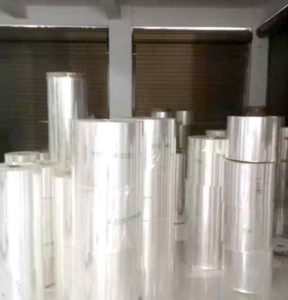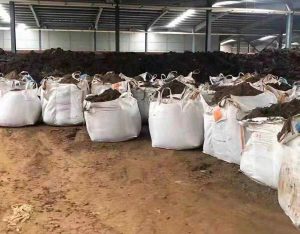What Is The Difference Between Food Grade Sack And Non Food Grade Sack?
Food can be contaminated in many ways and in many different places, some that we don’t even know. Therefore, to ensure that there are no loose ends in protecting your food, it is vital that you understand the difference between storage or carrying material. The basic method for classification is whether they are food grade or not.
A sack is classified as food grade when the chemicals used in making it are not harmful to the food inside. Non food grade sacks were made with chemicals that can seep into food and contaminate it in due turn. It is an idea which boils down to the nature of the materials.
The distinction between food and non-food grade materials is a way to retain the safe quality of foods. While it is important to be able to contrast them, it is even more beneficial to know how they are certified, how to identify them, where to get them, and how to personally insure your food items. In the following sections, I explore all these bits and serve you the knowledge in one go.
Certification For Food Grade Sacks
Food grade is a term which should not be mistaken as indicating edibility, rather, it identifies materials which are okay to come into contact with food. Regulatory bodies within the US and in Europe will consider a sack to be food grade if it meets the safety requirements.
These materials are the only kind allowed to touch your food from the harvesting procedure, to processing, to packaging down to the moment it lands in your hands. The best known bodies that operate in this regard are British Retail Consortium, the BRC, the GFSI or Global Food Safety Initiative and the American Institute of Baking.
These people set the rules for manufacturing and define what the standard should look like. The US Food and Drug Agency is also a reliable institution which is responsible for certifying materials through its established procedures.
Before a sack gets cleared by the relevant agency, it must first undergo an intensive testing process. The material is subjected to various temperatures to ascertain its reaction to the edible content. Once it is shown to have an effect on food, it is then doomed to fail.
Its effects can be in terms of taste, smell or colour of the food item. Regardless of how little this change is reflected, it still will not pass. However, where it is proven to not have hurt the quality in any way, the manufacturer scales through and is given the go ahead.
During subsequent manufacturing processes, he is mandated to keep to industrial standards and maintain consistent quality.
A food grade sack is prohibited from containing chemical additives such as dyes or any other component that can interfere with the quality of food. The sacks must also not have been recycled for use. Where this is done, there is a high chance that it still holds residue of its former contents which slip into fresh food.
How To Identify Food Grade Sacks
Identifying a food grade sack will largely depend on the industry standards in operation where you are located. Generally however, regulators specify that these bags have distinct markings on them. You will often find signs on your material that indicate the product used in making them.
These signs will also include details like the manufacturer and can even say in direct terms that it was meant for storing or carrying food. You should ensure that you check for these things to put your mind at rest.
You will also be interested to know that food grade sacks will necessarily be made with either linear low-density Polyethylene or Polypropylene. These materials are ideal for food storage. They are also designed to function in the long term.
Another means of identification is the kind of symbol used on the material. Where you see a fork and a spoon forming a dainty cross, you have a straightforward sign that the item is clear.
Equally, you can determine if it is food grade by searching the material for a resin identification code. This code is essential to telling you whether the material was recycled or not. When it is the former, then it is unsuitable for use. The code is a single number which is encircled by any figure from 1 to 7. In general terms, a material within this range is food grade.
Where To Get Food Grade Sacks
This question will depend on who you are. If you are a business person, then you can procure your materials from relevant suppliers. You must ensure that while you are doing this, your supply strictly adheres to set industry standards.
An organisation like the BRC would be a perfect reference point for the determination of quality. For regular retail buyers like me, you can get your food grade plastic from basically any store around you. You can request for a food grade sack and get it at no cost to yourself.
What Is Not A Food Grade Sack
As you finally prepare to get one of these healthy storage materials for yourself, you must understand that certain things do not qualify under the food grade definition. They cannot as such be subject to its standards.
Because purpose has a lot to do with the material being manufactured, items such as a trash bag will not be marked as food grade. This is due to the fact that it is not meant to function in that way and will affect the quality of food if used. It is imperative to also note that they are built with different components that can contaminate your food.
How You Can Further Protect Your Food
Even with food grade sacks, your food does not acquire automatic immunity from contamination. This can be caused by you. As part of the measures to complete the protection cycle, cleaning is an important part of the process.
You need to ensure that the storage location of your food is in top sanitary condition. When you do this, you have basically rejected a free lodging appeal from unhealthy pests.
Similarly, the storage arrangement is important. Food you know will degenerate quickly should be stored in adequate temperatures to prevent damage. This keeps them adequate and ideal for eating.
When you store your consumables in freezers, be careful that they do not overload. When this happens, you expose them to the direct impacts of air on chilled items. This can also cause rot.
Additionally, you could regulate the periods when you receive or go to get your food items. Putting these periods at a convenient time is more likely to help you transfer them to the right storage upon arrival.
Final Thoughts
Many things can affect the quality of food we ingest. In this article, we have explored food grade sacks and what they go through before they land in your trunk, but is crucial to repeat that it is not failproof. Because a material is said to be food grade does not always mean that it is.
A lot depends on you. For better hygiene, you should do a personal check and confirm that it is so. You would even not be wrong to reject something that you cannot independently verify. This little act is highly productive. It is all for good health.





